Home Improvement
Health-Conscious Kitchen Design and Insurance Incentives: Creating a Healthy and Cost-Effective Home
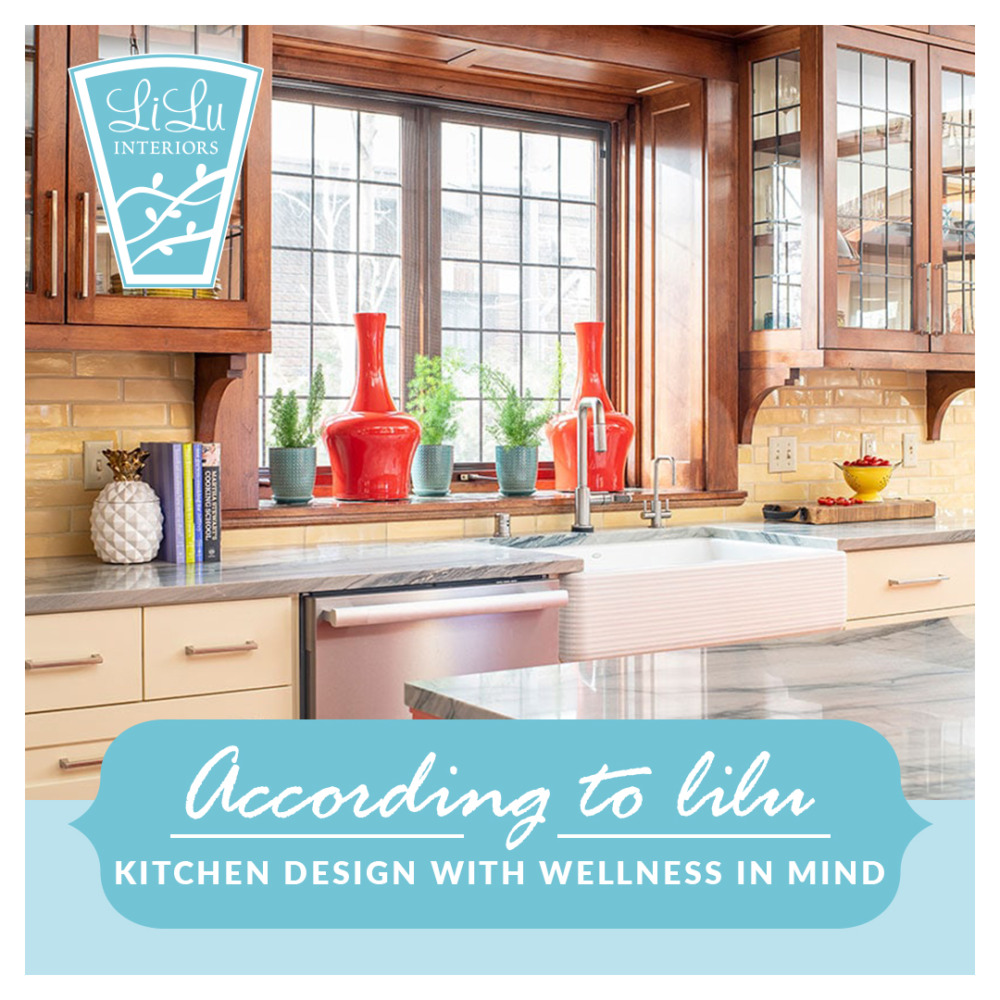
Health-Conscious Kitchen Design and Insurance Incentives sets the stage for this enthralling narrative, offering readers a glimpse into a story that is rich in detail with casual formal language style and brimming with originality from the outset.
Exploring the elements of a health-conscious kitchen design and the financial benefits of insurance incentives, this topic delves into the intersection of wellness and practicality in modern living spaces.
Health-Conscious Kitchen Design

Creating a health-conscious kitchen design involves incorporating elements that promote overall well-being and sustainability. From eco-friendly materials to natural lighting, there are various aspects to consider for a kitchen that prioritizes health.
Key Elements of a Health-Conscious Kitchen Design
- Use of non-toxic materials such as low-VOC paints and finishes to reduce indoor air pollution.
- Installation of water-efficient fixtures to conserve water and promote sustainability.
- Inclusion of ample storage space for organizing and storing healthy food options.
- Integration of energy-efficient appliances to minimize energy consumption and reduce environmental impact.
Eco-Friendly Materials for a Health-Conscious Kitchen
- Bamboo: A sustainable material that is renewable and durable for kitchen countertops and flooring.
- Recycled Glass: Used for backsplashes or countertops, adding a unique and eco-friendly touch to the kitchen.
- Cork: Ideal for flooring due to its comfort underfoot and natural antimicrobial properties.
- Reclaimed Wood: Gives a rustic look while reducing the need for new resources.
Natural Lighting and Ventilation in a Health-Conscious Kitchen
Natural lighting not only brightens up the space but also provides numerous health benefits such as improving mood and mental well-being. Adequate ventilation helps to reduce indoor air pollutants and maintain a fresh atmosphere in the kitchen.
Benefits of Indoor Plants in Kitchen Design
- Improved air quality by absorbing pollutants and releasing oxygen.
- Enhanced aesthetics and a calming effect on the overall ambiance of the kitchen.
- Reduction of stress and anxiety levels through biophilic design elements.
- Promotion of a connection to nature, fostering a sense of well-being and tranquility.
Insurance Incentives for Health-Conscious Kitchen
When it comes to creating a health-conscious kitchen, some insurance companies offer incentives to homeowners who incorporate specific features that promote health and safety. These incentives can lead to potential cost savings while also encouraging the use of energy-efficient appliances.
Identifying Insurance Companies with Incentives
Some insurance companies, such as State Farm and Allstate, provide incentives for homeowners who implement health-conscious kitchen designs. These incentives can vary depending on the company and the specific features installed.
Potential Cost Savings
- Installing features like fire-resistant materials, smoke detectors, and carbon monoxide detectors can lead to reduced insurance premiums due to decreased risk of fire-related incidents.
- By having a health-conscious kitchen design that promotes safety and reduces the chances of accidents, homeowners may qualify for lower insurance rates.
Impact of Energy-Efficient Appliances
Using energy-efficient appliances in a health-conscious kitchen not only helps reduce energy consumption and utility bills but can also lead to additional insurance incentives. Insurance companies may offer discounts for homeowners who have energy-efficient appliances installed, as they are seen as less likely to cause electrical fires or other hazards.
Applying for Insurance Incentives
- Homeowners interested in receiving insurance incentives related to health-conscious kitchen features should contact their insurance provider to inquire about available programs.
- Insurance companies may require documentation or proof of the installed features to qualify for incentives, so keeping records of the kitchen upgrades is essential.
- Some insurance companies may conduct inspections to verify the presence of health-conscious kitchen features before applying the incentives to the policy.
End of Discussion

From eco-friendly materials to energy-efficient appliances, the marriage of health-conscious kitchen design and insurance incentives opens up a world of possibilities for homeowners. Embrace a lifestyle that prioritizes well-being without compromising on style or financial savings.
Question Bank
What are some examples of eco-friendly materials suitable for a health-conscious kitchen?
Some examples include bamboo flooring, recycled glass countertops, and low-VOC paint for cabinets. These materials promote sustainability and indoor air quality in the kitchen environment.
How can indoor plants benefit a health-conscious kitchen design?
Indoor plants help purify the air, reduce stress levels, and add a touch of nature to the kitchen space. They contribute to a healthier and more vibrant cooking environment.
Which insurance companies offer incentives for health-conscious kitchen features?
Some insurance companies like XYZ and ABC provide incentives for installing safety features, energy-efficient appliances, and other measures that promote health and reduce risks in the kitchen.

Home Improvement
Crafting Your Oasis: Custom Deck Builders Near Me

In the realm of home improvement, custom deck builders near me stand out as the artisans of outdoor living spaces. With meticulous attention to detail and a passion for creating havens of relaxation, these professionals transform mere backyards into personalized retreats.
Let's delve into the world of custom deck builders and explore the key aspects that make them indispensable for your next project.
Researching Custom Deck Builders

When looking for a custom deck builder in your area, it's essential to do thorough research to ensure you find a reputable and skilled professional. Here are some tips to help you in your search:
Identify Key Factors to Consider
- Experience: Look for builders with years of experience in constructing custom decks.
- Portfolio: Review their past projects to see if their style aligns with your vision.
- Licenses and Insurance: Make sure the builder is properly licensed and insured to protect yourself in case of any accidents.
- Communication: Choose a builder who communicates effectively and listens to your ideas and concerns.
Importance of Reading Reviews and Checking References
Reading reviews from previous clients and checking references can provide valuable insight into the quality of work and professionalism of a custom deck builder. Here are some reasons why this step is crucial:
- Feedback: Reviews and references can give you an idea of the builder's reputation and the satisfaction level of their clients.
- Workmanship: You can assess the craftsmanship and attention to detail by looking at feedback from previous customers.
- Reliability: References can confirm the builder's reliability and adherence to timelines.
Services Offered by Custom Deck Builders
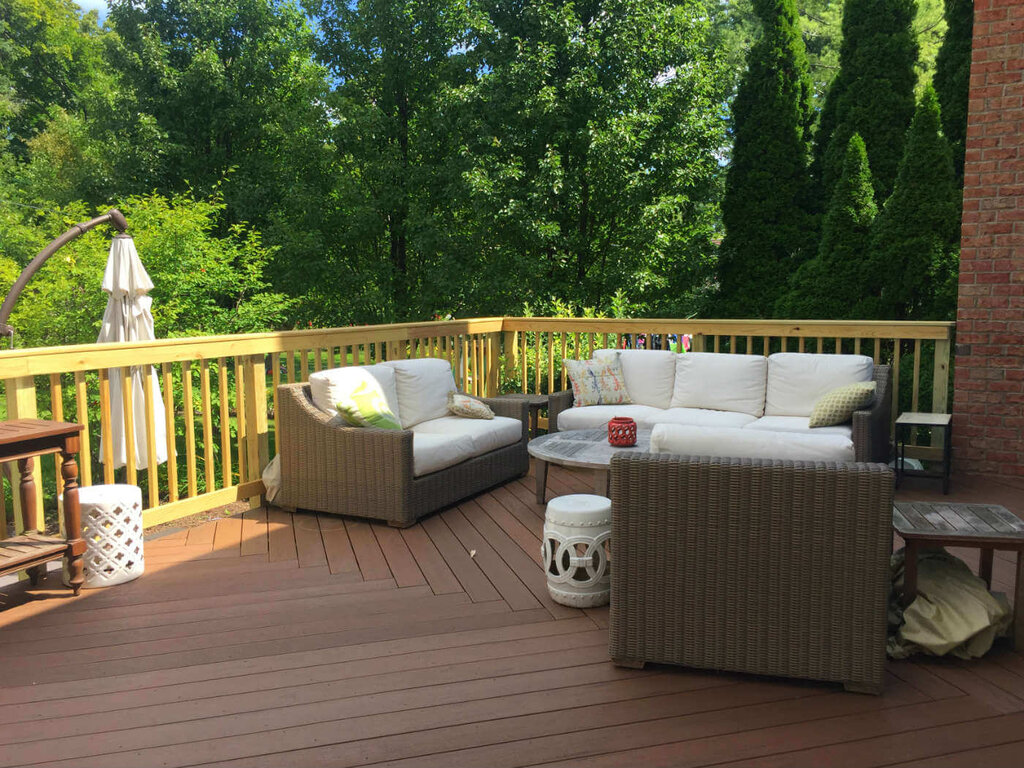
Custom deck builders offer a range of services to help homeowners create the perfect outdoor space. From design to installation, these professionals can bring your vision to life.
Common Services Offered
- Custom Deck Design: Custom deck builders work closely with clients to design a deck that meets their specific needs and preferences.
- Deck Construction: Once the design is finalized, custom deck builders handle the construction process, ensuring a high-quality, durable deck.
- Material Selection: Custom deck builders offer a variety of materials to choose from, including wood, composite, and PVC.
- Deck Repair and Maintenance: In addition to new deck construction, custom deck builders can also repair and maintain existing decks to keep them in top condition.
- Permit Assistance: Custom deck builders can help navigate the permit process, ensuring that all necessary approvals are obtained before construction begins.
Types of Materials Used
- Wood: Traditional and versatile, wood decks offer a natural look and can be stained or painted to match your home's aesthetic.
- Composite: Low-maintenance and durable, composite decks are made from a blend of wood fibers and recycled plastic.
- PVC: PVC decks are extremely durable and resistant to rot, mold, and insects, making them a popular choice for homeowners seeking a long-lasting option.
Importance of Design Customization
Customizing the design of your deck is crucial to achieving a space that meets your unique needs and complements your home. By working with custom deck builders to tailor the design to your preferences, you can create a functional and beautiful outdoor living area that enhances your home's value and your enjoyment of the space.
Budgeting for a Custom Deck
When it comes to creating a custom deck, budgeting is a crucial aspect to consider. Understanding the costs involved and planning accordingly can help ensure a successful project without breaking the bank.
Breakdown of Costs
Creating a custom deck involves several costs, including materials, labor, permits, and design fees. Here is a breakdown of potential costs associated with hiring a custom deck builder:
- Materials: This includes the cost of decking materials, railing, stairs, and any additional features you want to incorporate into your deck design.
- Labor: The labor cost will depend on the size and complexity of your deck project. Custom designs may require more labor hours, impacting the overall cost.
- Permits: Obtaining permits from your local municipality is essential for building a deck. Permit fees can vary depending on your location.
- Design Fees: If you require custom design services, there may be additional fees associated with drafting plans and creating a unique deck layout.
It's important to factor in all these costs when budgeting for your custom deck project to avoid any surprises along the way.
Tips for Effective Budgeting
To budget effectively for a custom deck project, consider the following tips:
- Set a realistic budget: Determine how much you are willing to spend on your custom deck and stick to that budget throughout the project.
- Get multiple quotes: Shop around and get quotes from different custom deck builders to compare prices and services offered.
- Prioritize your must-haves: Identify the features that are essential to your deck design and allocate your budget accordingly.
By planning ahead and being mindful of your budget, you can ensure that your custom deck project stays on track financially.
Cost-Saving Measures
While building a custom deck can be a significant investment, there are ways to save money without compromising quality:
- Choose cost-effective materials: Opt for durable, low-maintenance materials that fit within your budget without sacrificing quality.
- Consider a simpler design: Complex designs with intricate features can drive up costs. Simplifying your deck design can help reduce expenses.
- Do some of the work yourself: If you have the skills and tools, consider taking on certain tasks, such as painting or staining, to save on labor costs.
With careful planning and smart decision-making, you can create a beautiful custom deck that fits your budget and enhances your outdoor living space.
The Process of Building a Custom Deck
Building a custom deck involves several steps to ensure a successful and functional outdoor space that meets your needs and preferences. From the initial planning stages to the final construction, custom deck builders work closely with clients to bring their vision to life.
Obtaining Necessary Permits and Approvals
Before any construction begins, it is crucial to obtain the necessary permits and approvals from local authorities. This ensures that the deck meets building codes and zoning regulations, preventing any issues or setbacks during the project.
- Custom deck builders will assist clients in navigating the permit process, providing guidance on what is needed and handling the paperwork.
- Failure to obtain permits can result in fines, delays, or even having to remove the deck, so it is essential to comply with regulations.
Working with Clients to Bring Their Vision to Life
Custom deck builders collaborate closely with clients to understand their preferences, lifestyle, and budget to create a customized design that fits their needs perfectly.
- Builders will discuss material options, layout choices, and additional features to incorporate into the deck design.
- Regular communication throughout the project ensures that the client's vision is being realized and any adjustments can be made promptly.
Closing Summary
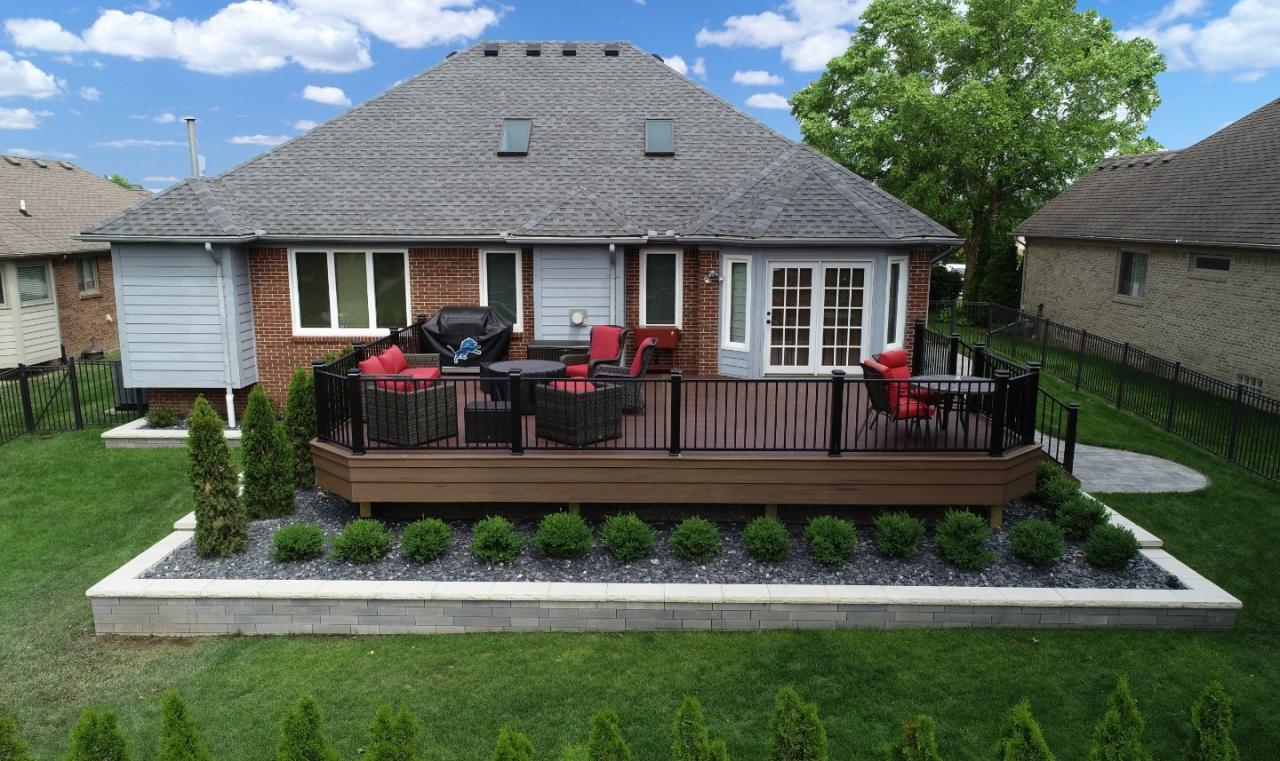
As we wrap up our exploration of custom deck builders near me, it becomes evident that these experts are not just builders but visionaries. Their ability to blend functionality with aesthetics ensures that your outdoor space becomes a seamless extension of your home.
Embark on your custom deck journey today and watch your dream outdoor oasis come to life with the help of these skilled craftsmen.
FAQs
How can I find the best custom deck builder near me?
Research local builders, consider factors like experience and reviews, and ask for references to ensure you choose the right professional for your project.
What are the common materials used by custom deck builders?
Custom deck builders often work with materials like wood, composite, PVC, and aluminum, each offering unique benefits in terms of durability and aesthetics.
How can I budget effectively for a custom deck project?
Break down costs, prioritize key elements, and explore cost-saving measures like material selection and project scope adjustments to stay within your budget.
What is the process of obtaining necessary permits for building a custom deck?
Custom deck builders typically handle the permit process, ensuring that all necessary approvals and paperwork are in place before commencing work on your project.
How do custom deck builders collaborate with clients to bring their vision to life?
Builders work closely with clients, discussing design ideas, material choices, and project timelines to ensure that the final result aligns perfectly with the client's vision and requirements.
Home Improvement
Finding Top-Rated Home Exterior Painting Services Near Me
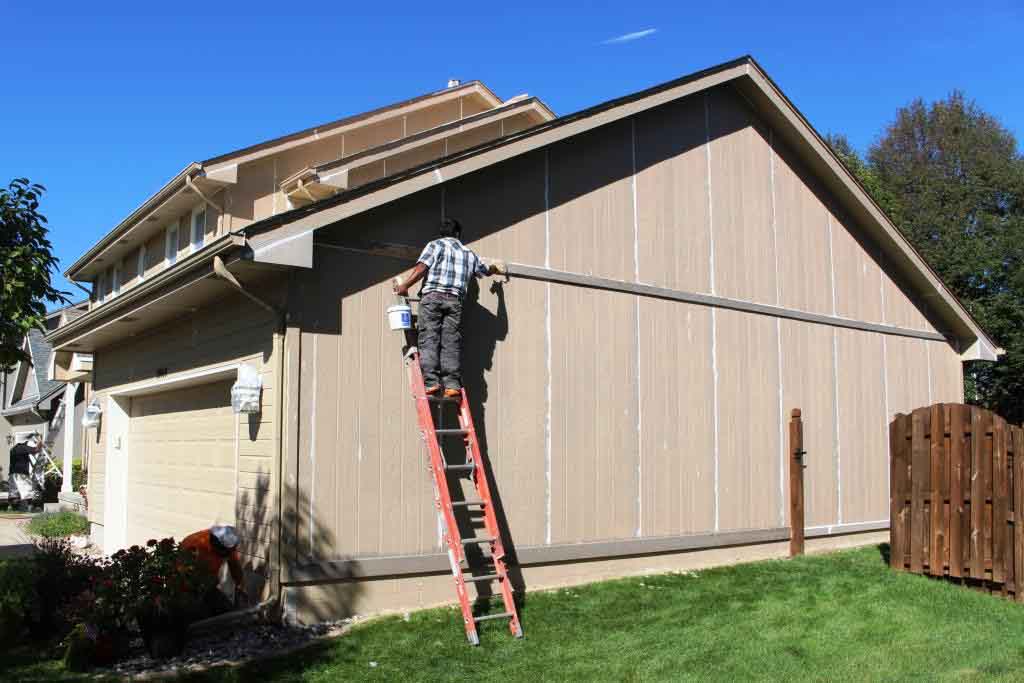
Exploring the realm of home exterior painting services near me, this introduction sets the stage for a deep dive into the importance of maintaining the exterior paint of a home, finding reliable painting services, factors to consider before hiring, and the preparation needed for a successful project.
As we delve further, we will uncover valuable insights on how exterior painting can enhance curb appeal, protect against weather elements, and the essential steps to take in selecting the right painting service provider for your needs.
Importance of Home Exterior Painting
Keeping the exterior paint of a home well-maintained is crucial for various reasons.
Exterior painting plays a significant role in enhancing the curb appeal of a home. A fresh coat of paint can make a house look more attractive and inviting, increasing its overall value.
Protection Against Weather Elements
Regular exterior painting not only improves the appearance of a home but also serves as a protective barrier against harsh weather conditions. The paint acts as a shield, preventing moisture from seeping into the walls and causing damage. It also helps to protect the exterior surfaces from UV rays, wind, and other elements that can wear down the materials over time.
Finding Reliable Painting Services

When looking for reliable home exterior painting services, it is essential to take certain steps to ensure you hire a reputable and trustworthy company. Here are some tips to help you find the best painting services for your home:
Checking Reviews and Referrals
Reading reviews and asking for referrals from friends, family, or neighbors can provide valuable insights into the quality of service provided by a painting company. Positive reviews and recommendations indicate a high level of customer satisfaction and can help you make an informed decision.
Requesting Quotes and Estimates
Before hiring a painting service provider, it is crucial to request quotes and estimates from multiple companies. This allows you to compare prices, services offered, and the overall value provided by each company. Be wary of unusually low prices, as they may indicate subpar quality of work or the use of inferior materials.
Factors to Consider Before Hiring
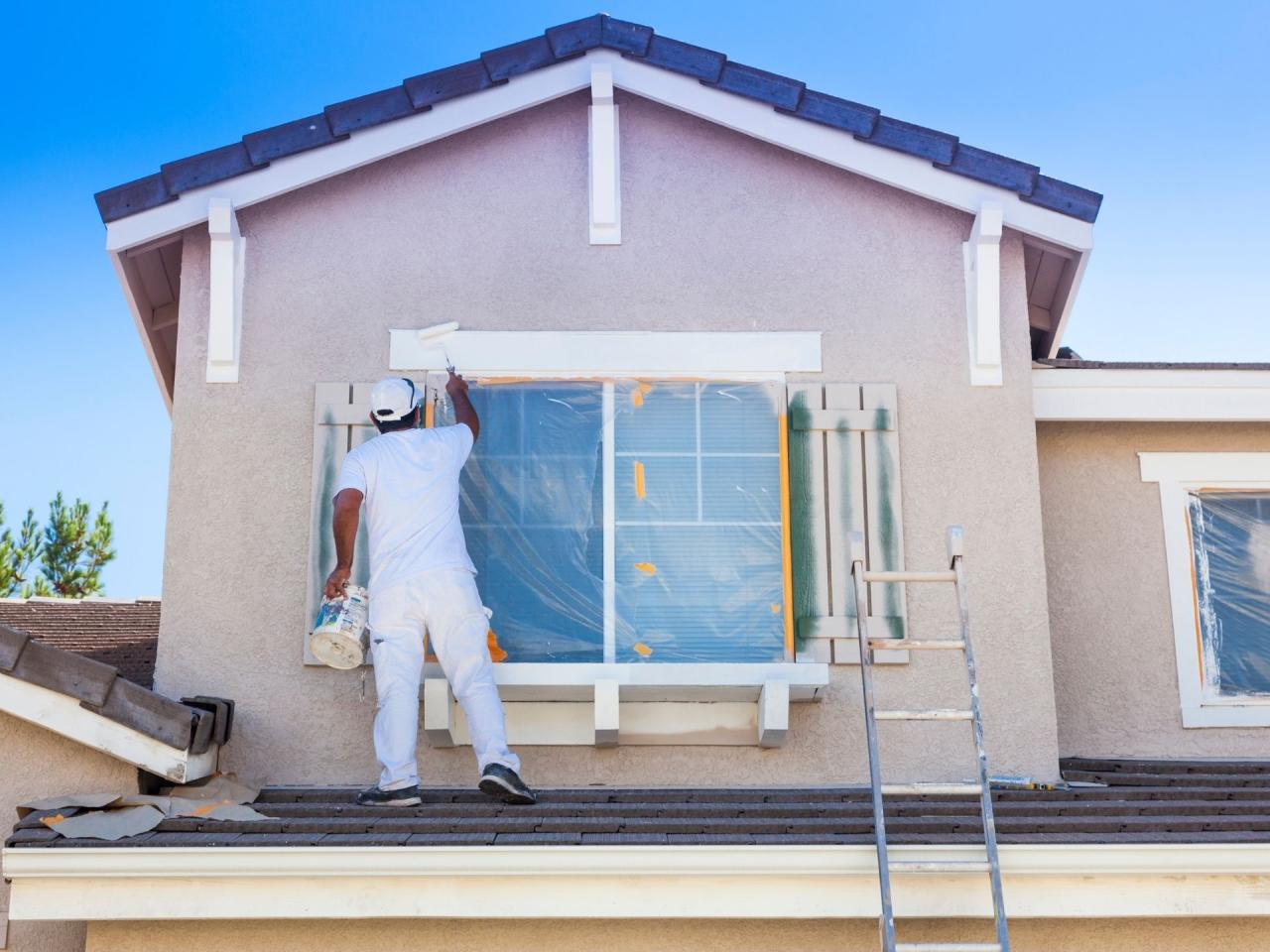
When looking to hire a home exterior painting service, there are several key factors that homeowners should consider to ensure they make the right choice for their painting project.
Verifying Insurance and Licensing
It is crucial to verify that the painting company you are considering is properly insured and licensed. This not only protects you as the homeowner in case of any accidents or damages during the painting process but also ensures that the company meets industry standards and regulations.
- Check for general liability insurance to cover any potential damages to your property.
- Ensure the painting company has workers' compensation insurance to protect their employees while working on your property.
- Confirm that the company holds the necessary licenses to operate in your area, indicating their legitimacy and adherence to local regulations.
Types of Paint Finishes and Colors
When selecting a paint finish and color for your home's exterior, it is essential to consider various factors such as durability, aesthetics, and maintenance requirements.
- Flat finish: Provides a smooth, matte appearance but may require more frequent touch-ups due to its susceptibility to dirt and stains.
- Satin finish: Offers a subtle sheen that is easy to clean, making it a popular choice for many homeowners.
- Semi-gloss finish: Provides a shiny finish that is highly durable and ideal for areas prone to moisture or high traffic.
Remember to consider the climate in your area when choosing paint colors and finishes to ensure they can withstand the weather conditions effectively.
Preparation for Home Exterior Painting
Before embarking on an exterior painting project, it is crucial to properly prepare the surfaces to ensure a successful and long-lasting paint job. This preparation phase involves cleaning, repairing, and selecting the right type of paint for different exterior surfaces.
Necessary Preparation Steps
- Clean the exterior surfaces thoroughly to remove dirt, dust, and grime. This can be done through pressure washing or scrubbing with a cleaning solution.
- Inspect the surfaces for any cracks, holes, or damage that need to be repaired before painting. Patch up any imperfections to achieve a smooth and even finish.
- Remove any loose or flaking paint by scraping or sanding the surfaces. This will ensure better adhesion for the new coat of paint.
Significance of Cleaning and Repairing
Proper cleaning and repairing of the exterior surfaces are essential for the success of the painting project. A clean and smooth surface allows the paint to adhere properly, preventing premature peeling or bubbling. Repairing any damage ensures a uniform finish and enhances the overall appearance of your home.
Choosing the Right Paint Type
- Consider the material of the exterior surfaces (wood, stucco, brick, etc.) when selecting the type of paint. Different surfaces require different types of paint for optimal results.
- Choose a high-quality exterior paint that is durable and weather-resistant to withstand the elements and maintain its color and finish over time.
- Consult with a professional painter or paint specialist to determine the best paint type for your specific needs and preferences.
Final Thoughts
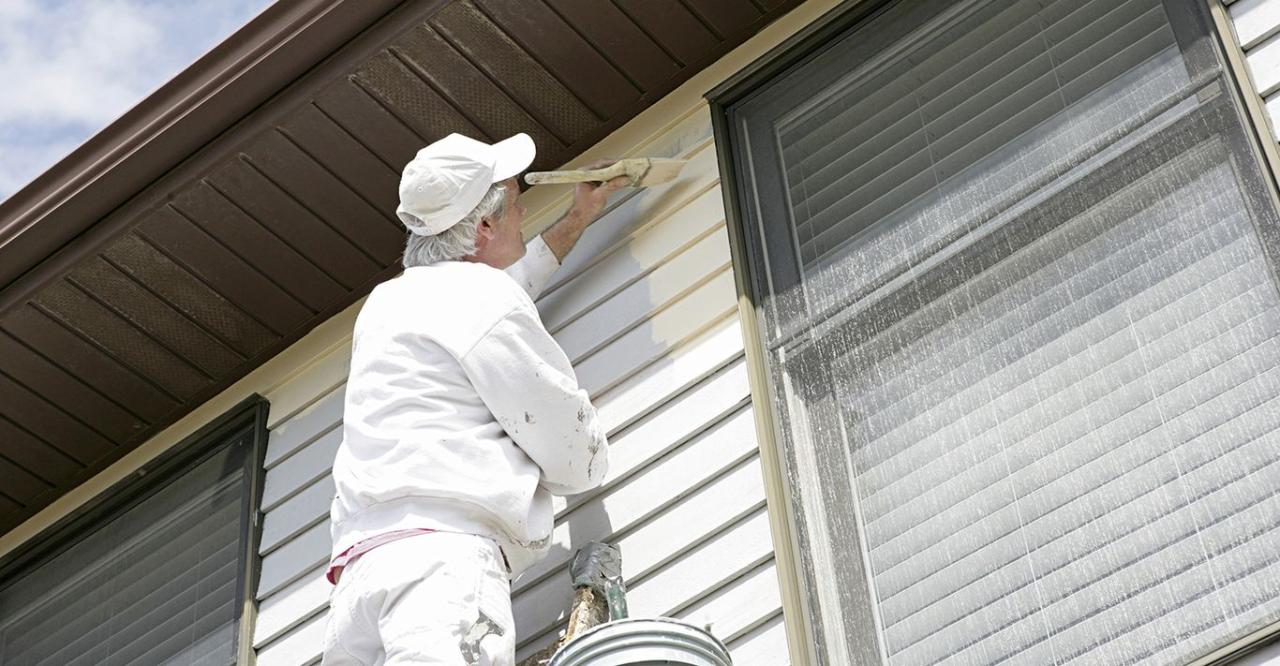
In conclusion, home exterior painting services near me offer not just a fresh coat of paint, but a protective shield and an aesthetic transformation for your beloved home. By following the tips and guidelines provided, you can ensure a seamless and satisfying painting experience that leaves your home looking its best.
FAQ Summary
What are some benefits of regular exterior painting?
Regular exterior painting not only enhances the visual appeal of your home but also serves as a protective barrier against harsh weather conditions, preventing damage and increasing the longevity of your property.
How can I find reputable home exterior painting services near me?
To find reliable painting services, consider asking for recommendations from friends or neighbors, checking online reviews, and requesting quotes from multiple companies to compare services and pricing.
Why is it important to verify insurance and licensing of a painting company?
Verifying insurance and licensing ensures that the painting company is legitimate, qualified, and accountable for any potential damages or issues that may arise during the painting process.
What types of paint finishes and colors are available for exterior painting?
Common paint finishes for exterior painting include flat, satin, semi-gloss, and high-gloss, while colors range from neutrals like white and beige to bold hues like blue and red, offering a wide range of options to suit different preferences.
Home Improvement
Exploring Eco-Friendly Home Renovation Materials

Delving into eco-friendly home renovation materials, this introduction immerses readers in a unique and compelling narrative. From sustainable options to cost-effective solutions, this topic covers a wide range of aspects that are crucial in today's environmentally conscious world.
As we dive deeper into the types, benefits, and examples of eco-friendly materials, readers will gain valuable insights into how these choices can positively impact both homes and the environment.
Types of Eco-Friendly Home Renovation Materials
When it comes to renovating your home in an eco-friendly manner, there are several types of materials that you can consider. These materials not only help reduce the impact on the environment but also offer long-term benefits in terms of sustainability and energy efficiency.
Bamboo
Bamboo is a popular eco-friendly material used in home renovation projects. It is a fast-growing plant that is sustainable and renewable. Bamboo flooring, cabinets, and countertops are just a few examples of how bamboo can be incorporated into your home renovation.
Its durability and versatility make it a great choice for environmentally-conscious homeowners.
Recycled Glass
Recycled glass is another eco-friendly material that can be used in home renovations. It is often used for countertops, tiles, and backsplashes. By using recycled glass, you are reducing the amount of waste that ends up in landfills and giving new life to materials that would otherwise be discarded.
Recycled glass also adds a unique and stylish touch to your home.
Reclaimed Wood
Reclaimed wood is a sustainable option for home renovation projects. This type of wood is salvaged from old buildings, barns, and other structures, giving it a rustic and weathered look. Reclaimed wood can be used for flooring, furniture, accent walls, and more.
By using reclaimed wood, you are not only reducing the demand for new timber but also preserving the history and character of the wood.
Solar Panels
While not a traditional building material, solar panels are a crucial eco-friendly addition to any home renovation project. Solar panels harness the power of the sun to generate electricity, reducing your reliance on nonrenewable energy sources. By installing solar panels, you can lower your carbon footprint and save money on energy bills in the long run.
Low VOC Paint
When painting your home as part of a renovation project, consider using low VOC (volatile organic compound) paint. Traditional paints release harmful chemicals into the air, contributing to indoor air pollution. Low VOC paint, on the other hand, emits fewer toxins, making it better for your health and the environment.
Plus, low VOC paint comes in a wide range of colors and finishes, so you don't have to compromise on style.These are just a few examples of eco-friendly materials that you can incorporate into your home renovation projects. By choosing sustainable and environmentally-friendly materials, you can create a beautiful and eco-conscious living space that benefits both you and the planet.
Cost-Effectiveness of Eco-Friendly Materials

When it comes to renovating your home, the cost of materials is always a significant factor to consider. In recent years, eco-friendly materials have become more accessible and affordable, but how do they compare to traditional renovation materials in terms of cost?
Comparison of Costs
Traditional renovation materials such as non-recycled wood, PVC, and standard paint may have a lower upfront cost compared to their eco-friendly alternatives. However, it is crucial to consider the long-term savings and return on investment that eco-friendly materials offer.
- Eco-friendly materials are often more durable and require less maintenance over time, reducing the need for frequent replacements.
- Energy-efficient materials like insulated windows and doors can help lower utility bills by improving the home's overall energy efficiency.
- Water-saving fixtures and appliances can also contribute to reduced water consumption, resulting in lower water bills.
Effective Budgeting Tips
Planning a budget for an eco-friendly home renovation can be challenging, but with the right strategies, it is possible to achieve a cost-effective project.
- Research and compare prices of eco-friendly materials from different suppliers to find the best deals.
- Consider investing in high-quality eco-friendly materials that offer longer warranties and better performance to avoid costly replacements in the future.
- Explore available rebates, incentives, and tax credits for using eco-friendly materials, which can help offset initial costs.
- Work with a professional contractor experienced in eco-friendly renovations to ensure that the project stays within budget and meets sustainability goals.
Durability and Performance of Eco-Friendly Materials
When it comes to evaluating the durability and performance of eco-friendly materials in comparison to conventional materials, it's important to consider how these options hold up over time in home renovations. Eco-friendly materials are designed to be sustainable and long-lasting, but how do they truly measure up?
Examples of Eco-Friendly Materials in Home Renovations
- Bamboo flooring: Bamboo is known for its durability and strength, making it a popular choice for flooring. Many homeowners have reported that bamboo flooring has held up well over the years, even in high-traffic areas.
- Recycled glass countertops: These countertops are not only eco-friendly but also durable and resistant to scratches and stains. They have become a favorite among homeowners looking for sustainable options that are also long-lasting.
- Sustainable wood siding: Using reclaimed or sustainably sourced wood for siding can provide a beautiful aesthetic while also lasting for many years with proper maintenance.
Maintenance and Longevity of Eco-Friendly Options
One of the key factors in maintaining the durability of eco-friendly materials is proper care and maintenance. Regular cleaning and upkeep can help prolong the life of these materials, just as with conventional options. Additionally, many eco-friendly materials are designed to be low maintenance, making them a practical choice for homeowners looking for sustainable solutions that require minimal care.
Energy Efficiency and Insulation

When it comes to creating an energy-efficient home, the choice of materials plays a crucial role. Eco-friendly materials not only help in reducing the carbon footprint but also contribute significantly to improving energy efficiency. One of the key aspects of energy efficiency in a home is the use of proper insulation materials.
These materials help in reducing energy consumption by maintaining a comfortable indoor temperature, thus decreasing the need for heating and cooling systems.
Role of Insulation Materials
Insulation materials are essential for creating a thermal barrier in a home, preventing heat loss during winters and heat gain during summers. By effectively insulating the walls, roof, and floors, homeowners can significantly reduce their energy bills and create a more sustainable living environment.
Additionally, proper insulation can also enhance the overall comfort of the home by maintaining consistent temperatures throughout different seasons.
- Insulation materials such as cellulose, fiberglass, and spray foam are commonly used for improving energy efficiency in homes.
- Cellulose insulation, made from recycled paper, is a cost-effective option that provides excellent thermal performance.
- Fiberglass insulation, composed of glass fibers, is non-toxic and resistant to mold and moisture, making it a durable choice for insulation.
- Spray foam insulation, although a bit pricier, offers superior insulation properties and can effectively seal air leaks in walls and attics.
Selecting the Best Eco-Friendly Insulation Options
When choosing eco-friendly insulation options, it is essential to consider the climate of the region. Different climates require different types of insulation materials to ensure optimal energy efficiency and comfort. For colder climates, materials with higher R-values are recommended to provide better thermal resistance.
On the other hand, in warmer climates, reflective insulation materials can help in reducing heat transfer and maintaining cooler indoor temperatures.
- For colder climates, consider using materials like rigid foam insulation or mineral wool, which offer superior thermal performance.
- In warmer climates, reflective insulation materials such as radiant barriers can be effective in reducing heat gain and improving energy efficiency.
- Consulting with a professional insulation contractor can help in selecting the best eco-friendly insulation options tailored to your specific climate and home requirements.
Last Recap
In conclusion, eco-friendly home renovation materials offer a sustainable and cost-effective way to improve living spaces while reducing environmental impact. By choosing durable and energy-efficient options, homeowners can create a greener future for generations to come.
Key Questions Answered
Are eco-friendly materials more expensive than traditional ones?
Eco-friendly materials may have a higher upfront cost but often provide long-term savings through energy efficiency and durability.
How do eco-friendly materials contribute to sustainability?
Eco-friendly materials reduce environmental impact by using renewable resources and minimizing waste during production.
What are some examples of successful home renovation projects using eco-friendly materials?
Projects like using recycled wood for flooring or installing solar panels for energy generation showcase the versatility of eco-friendly materials.






